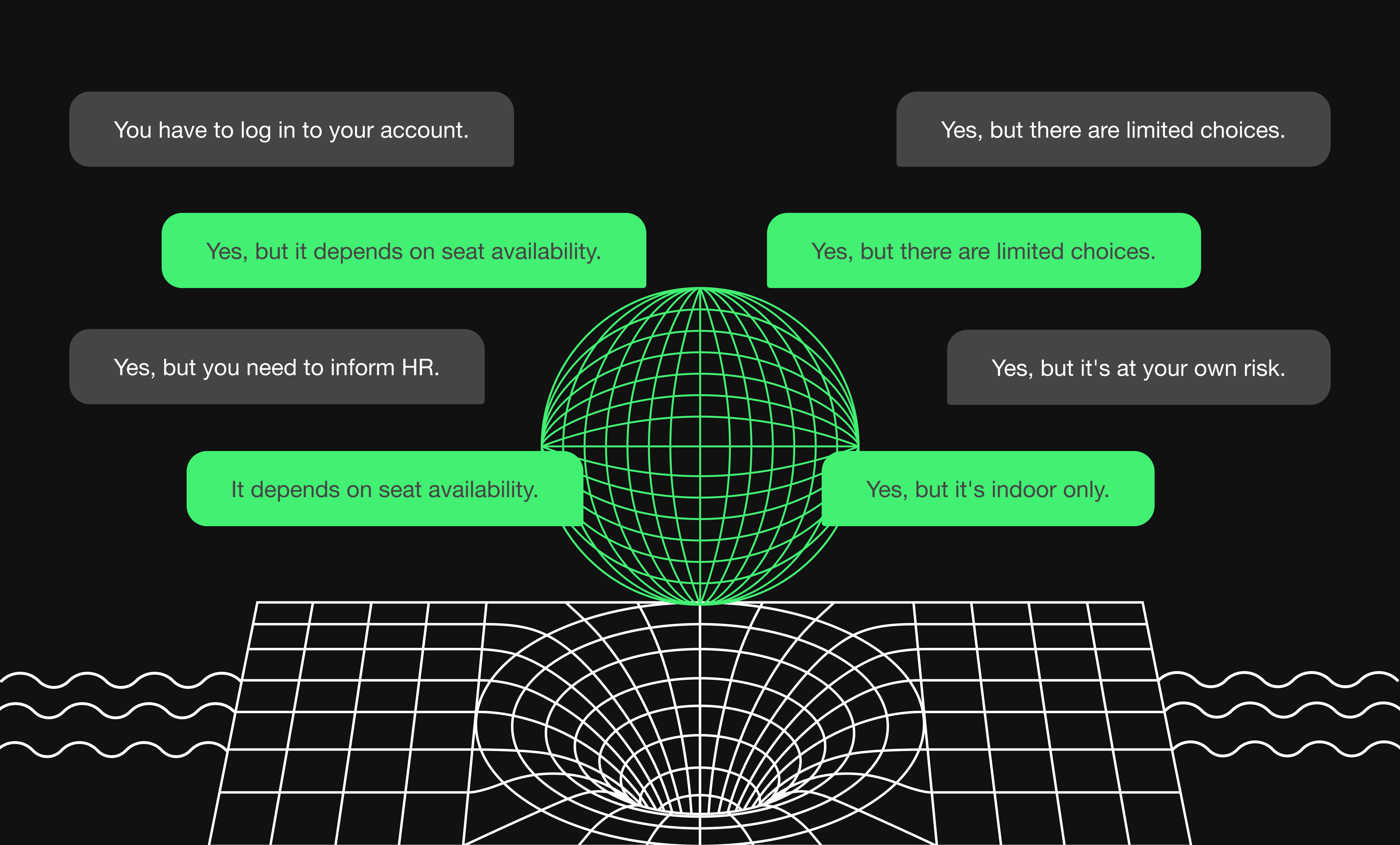The current great variety of apps is great for the user; with each app bringing something to enhance their life, whether that’s enhancing productivity, providing entertainment, building social connections, or keeping us informed, our apps keep us connected.
Mobile apps are big business
For businesses, those apps are one of the best ways to keep you connected, reminding you of their products and services, and to squeeze a little more of your finances from you, however, they earn their share.
But when it comes to building those apps, what are the options, and which is the best way to go?
Well, there are a few complications to the process with a steady stream of solutions.
However, there isn’t a one-size-fits-all out-and-out winner to the case in question. To figure out why we need to look at how apps are built.
Apps on iOS and/or Android
Apps built for one OS don’t work with their counterpart. Quite simply, iOS apps don’t run on Android, and vice versa. This is where hybrid app development comes into play, bringing a solution to the market that helps investors, organizations, and developers meet a current challenge with a clever solution.
Three key build types – each with its own pros and cons
Actually, there are more than three types of apps. However, we’re considering mobile and web apps for this article—those we use in our day-to-day lives when we pick up our mobile or tablet.
When you consider the array of icons and buttons on your home screens—the elements you lean on for your digital work, rest, and play—there are three typical ways to drive them from an idea to the finished product you use.
Web apps
For many organizations and operations, the programs they used to deliver specific actions and services for their users likely started life as sections of a website.
Whether it was a social media channel, an online store, a game, an accounts package, or a business management tool, there’s a good chance it started life as a page on the web.
For many operators, that’s all they need. If their web application is a one-off engagement to sell a service or specific product, without the need to keep drawing users back to engage—for example, if they monetize their sites using advertising—it isn’t so important.
However, imagine how much less revenue Facebook and Instagram would make if they couldn’t convince you to scroll your feed five or six times each day, placing dozens of ads in front of you while you do.
How are web apps viewed?
Web apps are viewed via your device’s Internet browser.
How are web apps made?
Web apps are cross-platform programs written in the latest HTML, CSS, and JavaScript versions.
Key advantages and disadvantages of web apps
Built for a web browser, they run on standard technologies and languages, easy to develop and launch. That alone keeps costs down and time to MVP quick.
However, they’re a nuisance to access compared to a dedicated app that launches from your home screen.
Also read: PWA Studio, a new way to create PWA applications
.png)
Native mobile apps
So, to make your life easier, the savvy business provider builds apps that you download to your device. Whether through Apple’s App Store for your iPhone or iPad or from the Google Play Store for one of the many Android devices, these apps are built specifically for your device.
How are native apps viewed?
Device-specific apps take full advantage of the UI built into the device’s hardware and operating system. They use the device’s default solutions and capabilities and are delivered via the device platform. As a result, they’ll look and feel as though they belong, with most icons and interactive events following the format for their OS.
How are native apps made?
Given that each device runs on a different operating system, apps have to be built specifically for one platform or using the native script for that system.
For Apple’s iOS, that’s usually Objective-C or Swift, and for Android, Kotlin or Java, using Android Studio.
Having apps built specifically for each device means they take full advantage of the unique hardware, accessing all the clever tech tools inside.
Key advantages and disadvantages of native apps
The main advantage of building an app specifically for its platform is how much it can utilize its specific technology. As a result, it will run faster, more efficiently, and utilize far more of the tech built into the device.
The main disadvantage is that you’ll need two apps built on two codebases, taking twice the time and costing twice the money.
Submitting apps to each relevant store can be time-consuming and complicated—even delivering updates to rapidly changing environments with bug fixes, new features, and upgrades can be a long-winded affair.
You may also like: What are the key mobile app deliverables? Comprehensive guide
Hybrid mobile apps
The solution to both sets of problems that’s gained masses of support and popularity is to be able to build an app on a single code core and encased in what’s known as a ‘container, shell or wrapper’ native to the specific OS. Hybrid applications are often developed using traditional web app codes and systems, easily accessed with lower costs.
Using such a wrapper provides access to the tech in each device and its unique functions. Adding plugins to the code, this kind of access means you can utilize your phone or tablet’s touch ID or face recognition, data sharing, file access, GPS, accelerometer, camera, Bluetooth connections, and more.
How are hybrid appslications viewed?
Wrapped in the native device OS, hybrid applications are viewed using the device’s embedded browser, taking advantage of all the UI components familiar to the user.
How are hybrid apps made?
The base HTML, CSS, and JavaScript are written the same as usual—or using another coding language depending on the tools you choose—and then converted using an application wrapper for the particular OS. With hybrid apps gaining massive market share, the software and tools to develop them are becoming increasingly popular and competitive. As a result, there are plenty to choose from, making the developer’s job easier than ever.
Key advantages and disadvantages of hybrid apps
With only one base code to create, the time and money saved is a big plus for hybrid app developers. In addition, it delivers a far simpler and faster route to MVP.
Each device utilizes its Android or Apple-specific options, yet both operate on the same base code. Without changes to the native OS code, upgrades to their ‘store’ circumnavigate testing and approval, achieving far faster times to market.
However, testing is far more complex for the conversion for multiple operating systems and, especially on Android, an endless selection of devices.
Worth checking: 14 mobile app development trends in 2022 that will be groundbreaking
Which is the best solution for your project?
Every project and app has unique requirements, dictating the best solution for its delivery.
If you’re looking to create complex deliveries and interactions—gaming, for instance—you’ll achieve a far smoother, faster, and more enjoyable end product if you use the device’s native scripts and platform.
However, if your project requires a little less grunt and you’ve got a deadline demanding you get to market in the quickest time possible, the hybrid could well be your answer.
Given that most mobile apps aren’t dependent on the most complex components, hybrid solutions simplify development, offering organizations faster and more affordable routes to market. Of course, they might not be quite as quick, smooth, or always take advantage of the hardware available, but will your users notice? As long as it offers them a happy UX and satisfies their needs, what’s not to like?
Hybrid development technology
Apple and Google (for Android) offer SDKs (software development kits) for native OS app creation, but as hybrid solutions have become a valid contender with masses of market share, there are plenty of alternatives for your cross-platform projects.
Again, it’s up to you and your developer to decide the best route for your project, but rest assured, there are plenty of options to choose from.
The following are merely a small selection of the most popular.
React Native
React Native is an open-source project that allows the building of native iOS and Android from a single codebase. It’s not a typical HTML converter or wrapper solution; it uses JavaScript and React to deliver amazing outcomes indistinguishable from true native options.
With a vast library of components, it’s easy to adapt and quick to MVP. It’s also great at debugging.
Xamarin
Another widely supported and popular option, Xamarin, delivers a base code with the majority transferable between iOS and Android.
Its testing facilities are simple yet include thousands of virtual devices. There are masses of support tools and backed by Microsoft, it’s been one of the most popular tools on the market. If it’s good enough for Pinterest and Siemens, it’s good enough for all kinds of applications.
Apache Cordova
Formerly known as PhoneGap, Apache Cordova is a free, open-source development platform for building cross-platform apps using CSS3, HTML5, and Javascript. Being open-source, there are masses of resources and plugins, and with its platform fit for iOS, Android, Windows, and macOS, there’s plenty of documentation to get you moving.
Hybrid app development – conclusion
Choosing the best route into hybrid app creation will demand an understanding of what you expect to achieve, your limitations, time to market, and your budget. Once you’ve picked your route, there’s another decision to make regarding how your developer will build and produce your hybrid product.
Whichever your route and tools, there’s no doubt that hybrid application development will continue to provide plenty of advantages meeting markets simultaneously, lowering costs, and speeding up your progress.






















